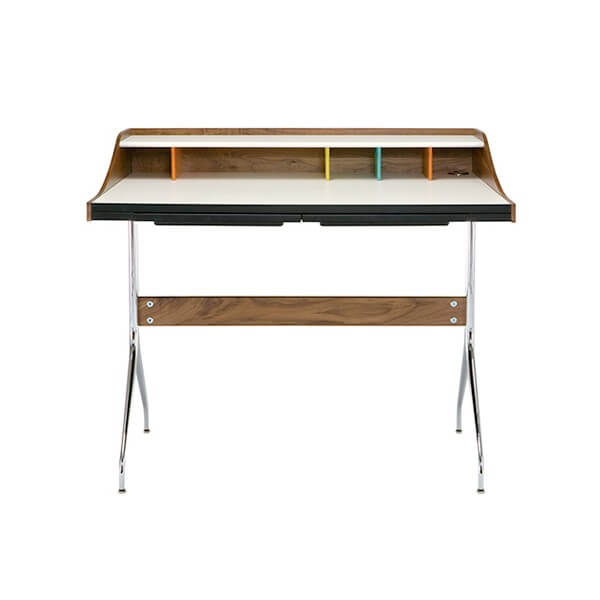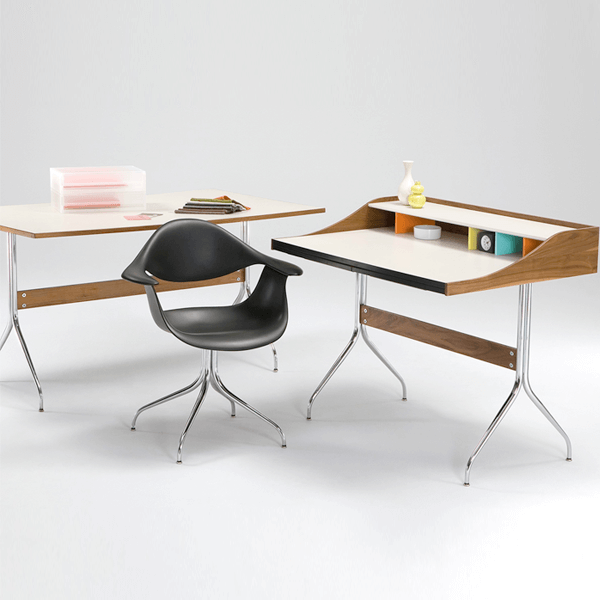



We decided to reintroduce the classic Nelson swag leg group because the distinctive group has the look, scale, and function just right for today, 50 years after George Nelson designed them.
The size of the desk is perfect for a laptop and mobile device dock and makes efficient use of space in your home or office. The tables work well in offices and meeting spaces and in your dining area at home.
What's a Swag Leg?
We named this furniture group for the process that created the distinctive legs because designer George Nelson started with this idea: "Wouldn't it be beautiful to have some kind of sculptured leg on a piece of furniture?" How could that be done without wood and hand-carving tools?
Using pressure to taper and curve a metal tube—the process called swaging—proved to be the best way to produce the legs. Inserting a screw in the legs and rotating them in opposite directions makes quick work of assembly—and makes a strong joint too. You can assemble the pieces yourself and save money on shipping.
What's Your Style?
You can have a swag leg desk, a work table, a round dining table, a rectangular dining table. All have chrome bases with walnut stretchers. All have adjustable glides.
Although it was introduced in 1958, the desk seems to have been designed to fit today's compact electronics. A grommet for cable management has been added to the back of the desk. Colorful cubbyholes at the back keep materials organized and at hand, and one fits a laptop computer. Two molded plastic drawers store small items.
The work table provides plenty of room to spread out papers; dining tables can also be meeting tables.
Tops can be white laminate or walnut veneer with a walnut veneer edge band that coordinates with the solid walnut stretcher.
Design Story
George Nelson began with the legs, insisting that they be made of metal, machine formed, and pre-finished. And beautiful. He wanted that graceful curve. He also wanted them to be easy for the consumer to assemble, so the desk and tables could be shipped knocked down to save on costs.
Swaging—using pressure to taper and curve a metal tube—proved to be the best way to produce the legs, which are 16-gauge steel and have adjustable glides. Nelson added solid walnut stretchers that bolt to the legs for a stable, durable base common to the desk and tables.
Once he got started, Nelson didn't stop at desks. He made a work table that lets you spread out papers and tools. He made two dining tables—one round, one rectangular—with the walnut base stretchers in an X formation to make room for your legs. It's all about the legs.
Why Herman Miller